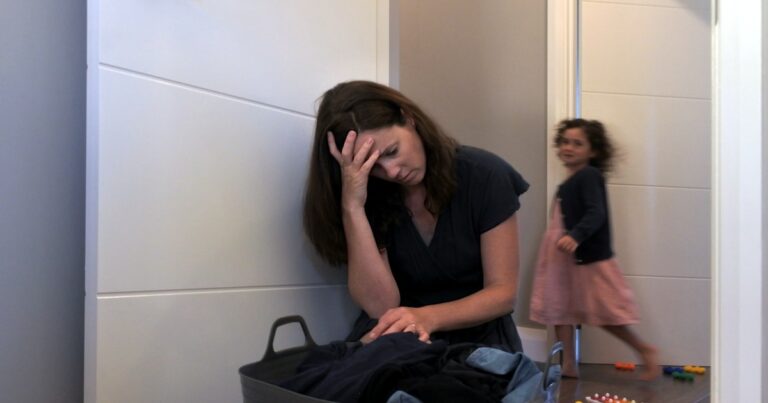
[ad_1]
New data reveals that the majority of moms are still pulling significantly more weight at home than their partners — and the result is stress, mental illness, and shockingly little alone time. Despite progression in taking down gender norms in heteronormative marriages, women still tend to take on most of the household duties, and it’s only gotten worse since the pandemic.
A new survey released as a part of Motherly’s 2023 State of Motherhood, revealed that most mothers feel like they need to “do it all” with minimal help, and it’s leading to burn-out and abandoned careers.
While physical household chores, like laundry and dishes, seem to be more of the common tasks moms are left with, there is so much more invisible labor, like keeping track of kids’ schedules and packing for vacations, which moms also usually perform alone or with little help.
Motherly surveyed nearly 10,000 mothers, and 58% reported they are the primary parent, responsible for the duties of running a household and family management. That result is up 2% from 2022.
To add insult to injury, 51% of those who say they manage most of the household chores are also working full-time. Even when moms are the ones bringing home the bacon, they still do more chores than their husbands. These tasks include cleaning, meal prep, shopping, childcare, scheduling, bed time, bills, pet care, and children’s homework, just to name a few.
At the same time, the rate of stay-at-home moms has doubled since the pandemic’s Great Resignation, with 25% of moms opting to leave the workforce to raise kids at home. Of those moms, 64% say they’d return to work if there were more flexible work schedules, while over half said that childcare needed to be more affordable.
And while the pandemic, which led to many families spending a lot more time at home together, may have lended a hand to moms looking for some help around the house (34% of mothers said they share household duties equally with their partners in a 2022 survey), that number is down 2% this year.
It’s hard not to read these numbers and feel frustrated, hopeless, or angry — whether or not you’re one of the moms who doesn’t have equal division of labor in the household.
Unsurprisingly, the burdens placed on moms to “do it all” have negatively effected their mental health. A recent poll found that 42% of working mothers surveyed were diagnosed with anxiety and/or depression in 2022, compared to 28% of the general population and 25% of child-free coworkers.
In fact, a recent survey conducted by Calm found women “take less care of their own mental health after becoming a caregiver, while men take better care of themselves.”
These stats parallel with Motherly’s survey which revealed 62% of mothers report getting less than one hour to themselves each day, and 49% of moms report “always” or “frequently” feeling burned out.
When burnt out moms were asked what could help lighten their load, 50% of survey respondents wished to be able to share more of the household duties with their partner.
The term “default parent” refers to the parent in the relationship that is automatically the one to go to for a child’s needs. To no one’s surprise, that tends to be the woman in cishet relationships.
However, it should be noted that research shows that dads are more involved in child-rearing than they used to be. A 2022 study found that modern dads are actually more engaged with their kids than fathers of previous generations.
But as the data clearly shows, just because they are more present fathers does not mean they are pulling their weight equally when it comes to every single other household task needing to be done. We’re making progress, but there’s still a long, long way to go. Just ask 58% of moms.
[ad_2]